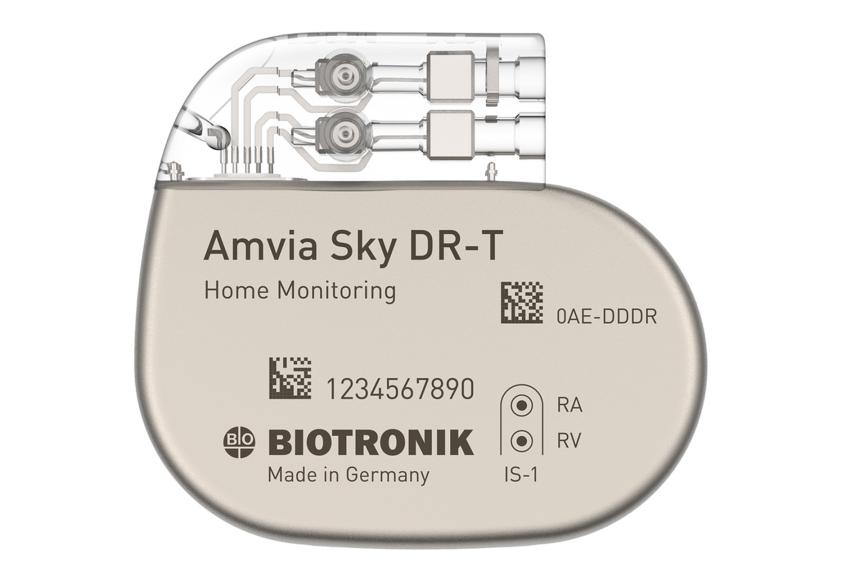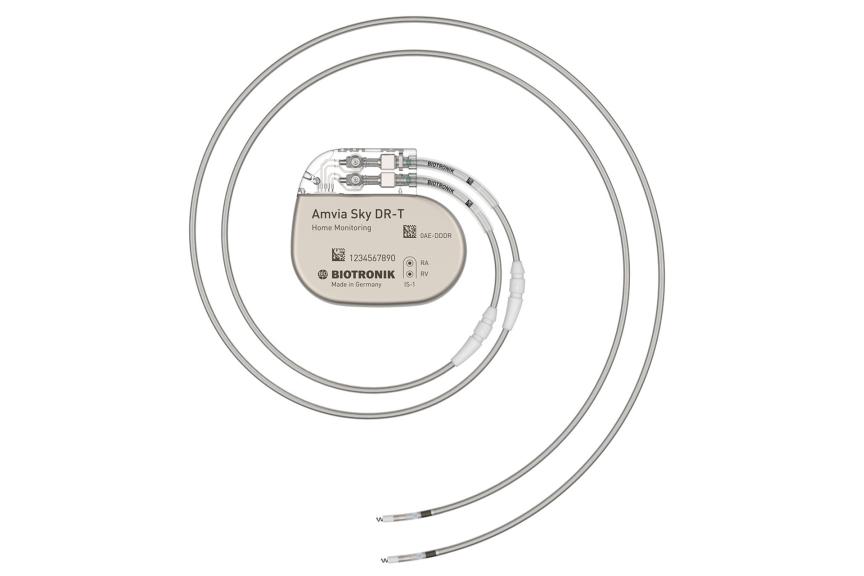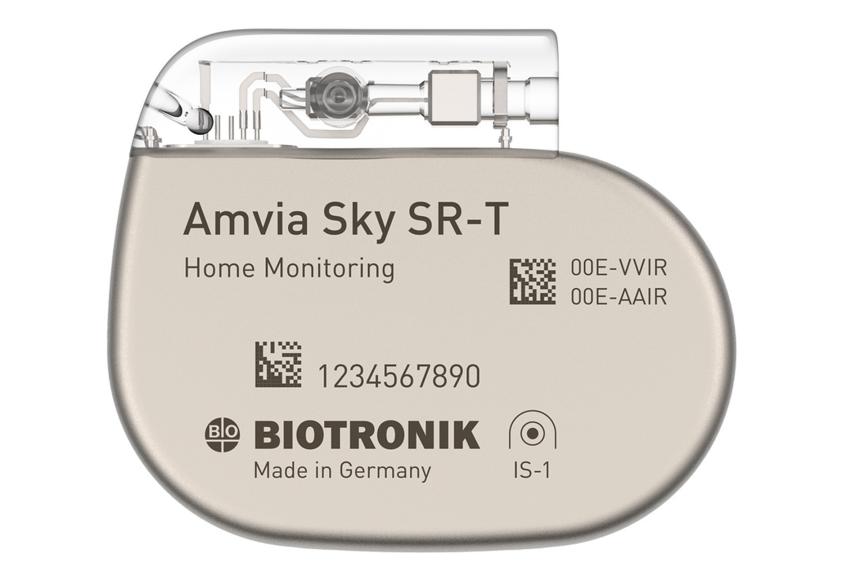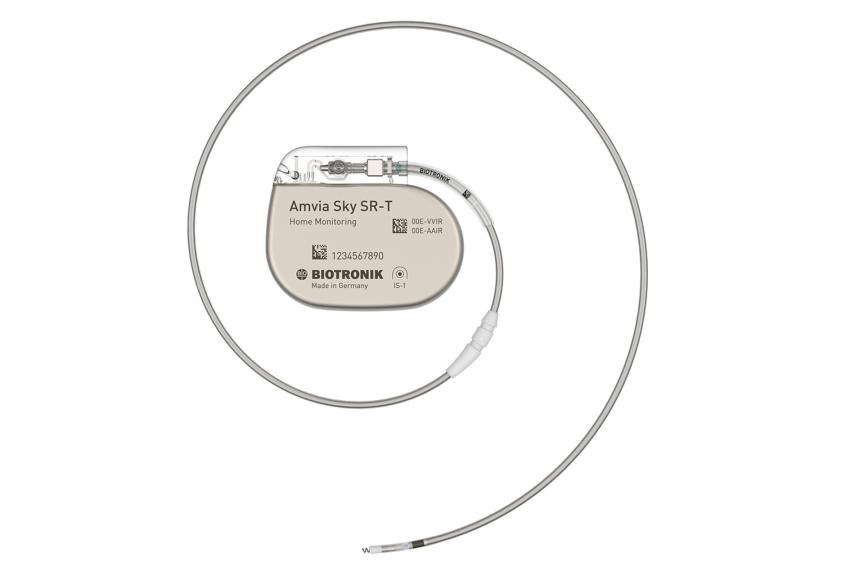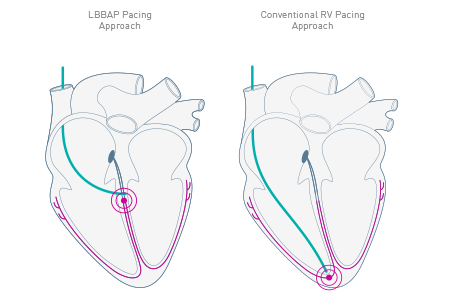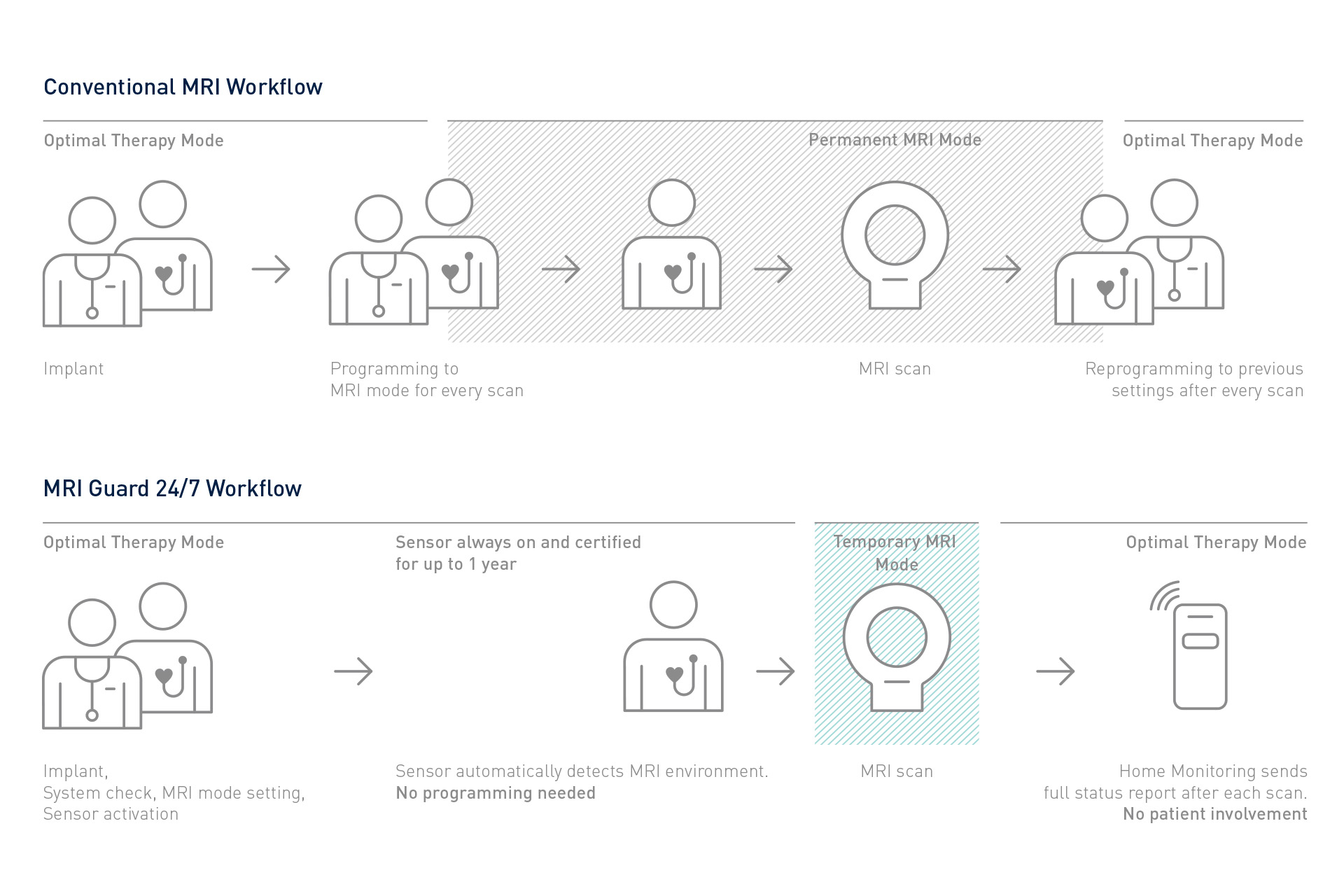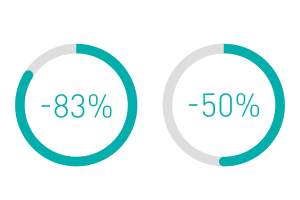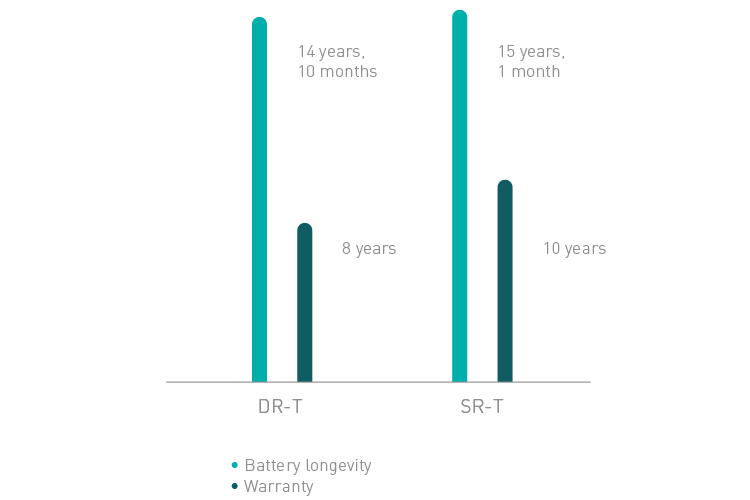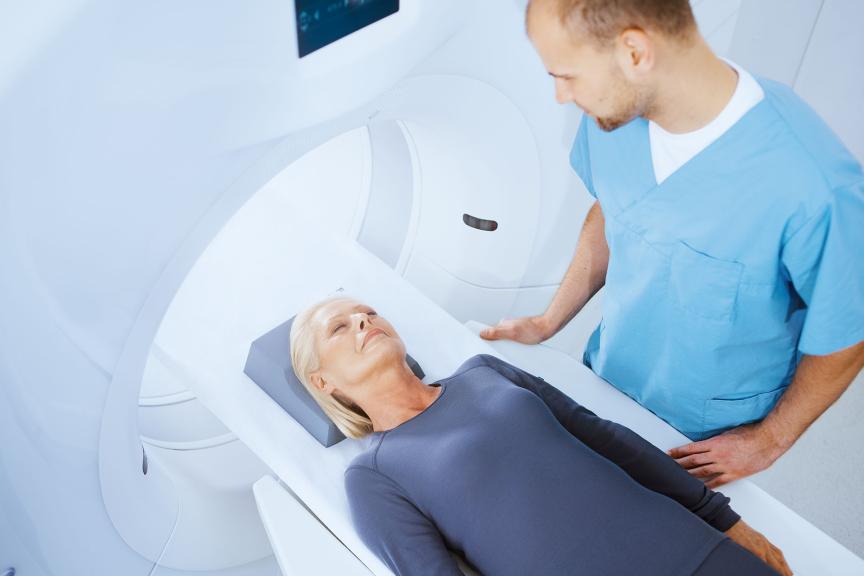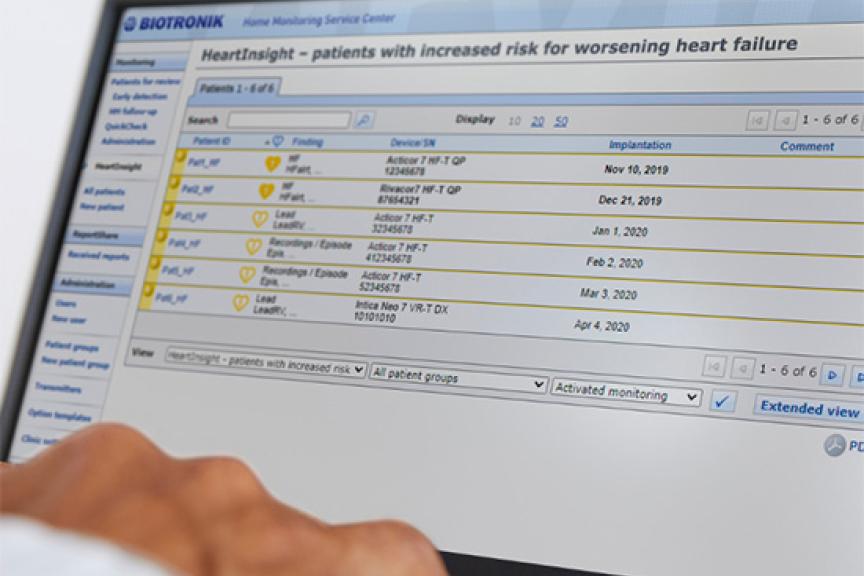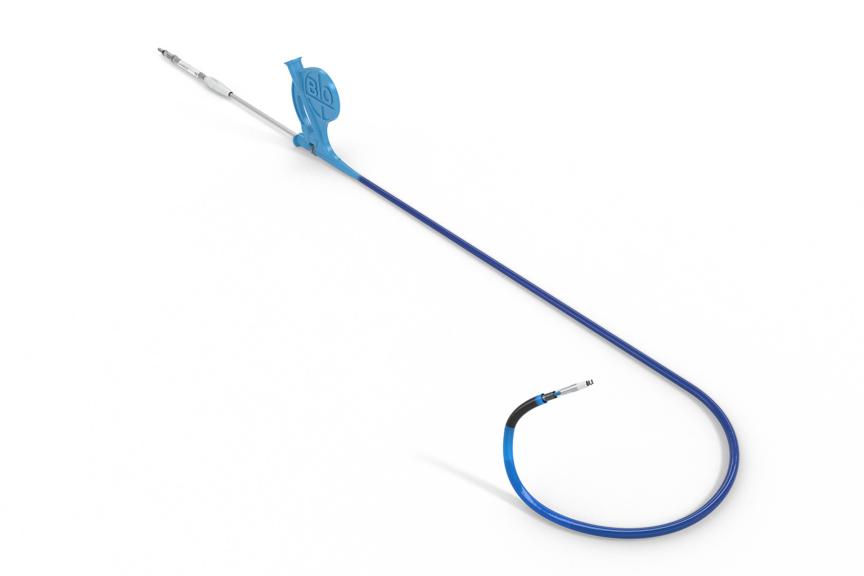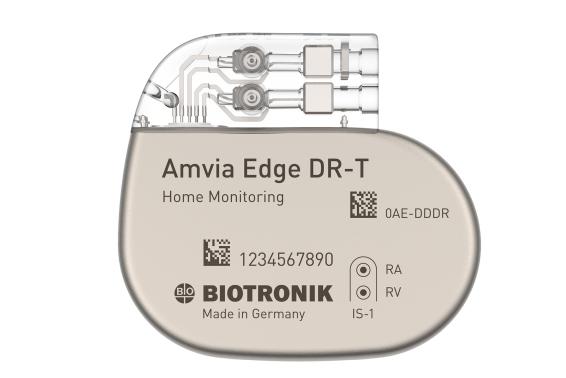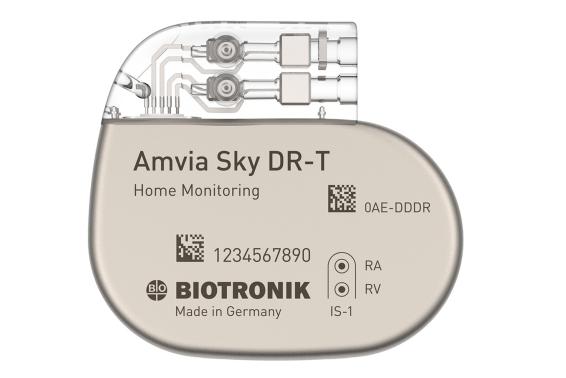Amvia Sky DR-T/SR-T
Het Amvia Sky-stimulatiesysteem geeft u keuzes. Profiteer van een breder scala aan behandelingsopties, waaronder fysiologische stimulatie en functies om de ontwikkeling van atriumfibrilleren (AF) aan te pakken.
Als de eerste pacemaker die CE is goedgekeurd voor een stimulatie van het Left Bundle Branch Area Pacing (LBBAP)1 bevordert de Amvia Sky natuurlijke myocardiale contractiepatronen bij uw patiënten. Het biedt bovendien fysiologische hartfrequentie met Closed Loop Stimulation (CLS) en heeft tot doel het sinusritme te behouden met Atriale ATP (aATP).
Tegelijkertijd automatiseert Amvia Sky veel routinetaken tijdens nacontroles in de kliniek, monitoring op afstand en MRI-workflows. Bied uw patiënten unieke fysiologische stimulatie, verbeter de therapie en maak tijd vrij in de dagelijkse workflows – zodat meer patiënten kunnen profiteren van meer gepersonaliseerde zorg.
Highlights van product
Fysiologische stimulatie bereiken
Amvia Sky is de eerste pacemaker die CE is goedgekeurd voor Left Bundle Branch Area Pacing (LBBAP).1 Bovendien volgt Amvia Sky's unieke Closed Loop Stimulation (CLS)-sensortechnologie het autonome zenuwstelsel en past zich automatisch aan2 om de natuurlijke intrinisieke regulatie na te bootsen.3
Atriale hartritmestoornis beheren
Amvia Sky heeft als doel patiënten te ondersteunen bij het handhaven van fysiologische hartfrequenties in de loop van de tijd. Het combineert mogelijkheden voor atriale monitoring, zowel in de praktijk als op afstand (remote), met het managen van atriale hartritmestoornissen met Atrial ATP (aATP), om actief het vroegtijdig optreden van atriumfibrilleren (AF) te behandelen.14
Vereenvoudig de zorgtrajecten
Amvia Sky omvat een verscheidenheid aan oplossingen die de workflows tijdens het hele patiënttraject stroomlijnen, van implantatie en nacontroles tot monitoren op afstand en optimale MRI-toegang.
Media
Downloads en gerelateerde links
Neem contact met ons op
Referenties
1) BIOTRONIK Amvia Sky technische handleiding, Medtronic Azure XT DR MRI SureScan™ technische handleiding; Boston Scientific Accolade MRI™ technische handleiding; Abbott Assurity MRI™ gebruikershandleiding; MicroPort Alizea™ handleiding voor implantaten. 2) Lindovska M, Kameník L, Pollock B, et al. Clinical observations with Closed Loop Stimulation pacemakers in a large patient cohort: the CYLOS routine documentation registry (RECORD). Europace. 2012; 14: 1587– 1595. 3) Santini M, Ricci R, Pignalberi C, et al. Effect of autonomic stressors on rate control in pacemakers using ventricular impedance signal. Pacing Clin Electrophysiol. 2004; 27: 24-32. 4) Sharma PS, Patel NR, Ravi V, et al. Clinical outcomes of left bundle branch area pacing compared to right ventricular pacing: Results from the Geisinger-Rush Conduction System Pacing Registry. Heart Rhythm. 2022; 19 (1): 3-11. 5) De Pooter J, Ozpak E, Calle S, et al. Initial experience of left bundle branch area pacing using stylet-driven pacing leads: A multicenter study. J Cardiovasc Electrophysiol. 2022; 33 (7): 1540-1549. Disclaimer: Dit materiaal geeft slechts een samenvatting van het onderzoeksgebruik van instrumenten voor geleidingssysteemstimulatie (CSP) door De Pooter et al. in hun klinische studie. Houd er rekening mee dat de Solia S-kabel niet is goedgekeurd voor CSP. BIOTRONIK CSP-instrumenten zijn momenteel niet goedgekeurd voor geleidingssysteemstimulatie in de Verenigde Staten. Inhoud niet bedoeld voor Amerikaanse zorgverleners. 6) Menezes AS, Daher MT, Nascente CM, Moreira HG, Moreira TAC en Campos RN. Correlatie tussen Closed Loop Stimulatie, cardiopulmonale capaciteit en kwaliteit van leven PBMR. 2003; 8 (2): 119-124. 7) Pavri BB and Russel S. An impedance sensor is superior to an accelerometer for chronotropically incompetent patients with sinus node dysfunction: results of a pilot study with a dual sensor pacemaker. Circulation. 2006; 114: II_749. 8) Coenen M, Malinowski K, Spitzer W, et al. Closed Loop Stimulation and accelerometer based rate adaptation: results of the PROVIDE study, Europace. 2008; 10: 327-333. 9) Malinowski K. Interindividual comparison of different sensor principles for rate adaptive pacing PACE. 1998; 21(PT II): 2209-2213. 10) Abi-Samra FM, Singh N, Rosin BL, DwyerJV, and Miller C. Europace. 2013; 15: 849-856. 11) Puglisi A, Favale S, Scipione P, et al. Overdrive versus conventional closed-loop rate modulation pacing in the prevention of atrial tachyarrhythmias in brady-tachy syndrome: on behalf of the Burden II study group. Pacing Clin Electrophysiol. 2008; 11: 1443-55. 12) Ikeda S, Nogami A, Inoue K, et al. Closed‐loop stimulation as a physiological rate‐modulated pacing approach based on intracardiac impedance to lower the atrial tachyarrhythmia burden in patients with sinus node dysfunction and atrial fibrillation. J Cardiovasc Electrophysiol. 2020; 31: 1187-1194. 13) Coenen M, Malinowski K, Spitz W, et al. Closed loop stimulation and accelerometer-based rate adaptation: results of the PROVIDE study. Europace. 2008; 10: 327-333. 14) Mabo P, Victor F, Bazin P, et al. A randomized trial of long-term remote monitoring of pacemaker recipients (the COMPAS trial). Eur Heart J. 2012; 33(9): 1105-1111. 15) Nattel S, Burstein B, Dobrev D. Atrial remodeling and atrial fibrillation: mechanisms and implications. Circ Arrhythm Electrophysiol. 2008; 1 (1): 62-73. 16) Gegevens in bestand. 17) Varma N, Epstein AE, Irimpen A, et al. Efficacy and safety of automatic remote monitoring for implantable cardioverter-defibrillator follow-up: the Lumos-T Safely Reduces Routine Office Device Follow-up (TRUST) trial. Circulation. 2010; 122(4): 325-332. 18) Mullane S, Michaelis K, Henrickson C, et al. Utilization and programming of an automatic MRI recognition feature for cardiac rhythm management devices. Heart Rhythm O2. 2021; 2: 132– 137. 19). Gegevens in bestand. 20) Siddamsetti S, Shinn A, Gautam S. Remote programming of cardiac implantable electronic devices: a novel approach to program cardiac devices for magnetic resonance imaging. J Cardiovasc Electrophysiol. 2022;33(5):1005–1009. 21) Watanabe E, Yamazaki F, Goto T, et al. Remote management of pacemaker patients with biennial in-clinic evaluation: continuous Home Monitoring in the Japanese At-Home study: A randomized clinical trial. Circ Arrhythm Electrophysiol. 2020 May;13(5):e007734. doi: 10.1161/CIRCEP.119.007734. 22) Ricci RP, Morichelli L, Quarta L, et al. Long-term patient acceptance of and satisfaction with implanted device remote monitoring, Europace. 2010; 12(5): 674-679. 23) Garcia-Fernández FJ, Asensi JO, Romero R, et al. Safety and efficiency of a common and simplified protocol for pacemaker and defibrillator surveillance based on remote monitoring only: a long-term randomized trial (RM-ALONE). Eur Heart J. 2019; 40(23): 1837– 1846. 24) Gegevens in bestand. 25) Gegevens in bestand. 26) Amvia Sky SR-T 10 years; Limited Warranty for BIOTRONIK Cardiac Implantable Electronic Devices; Medtronic Limited Warranty Summary; Boston Scientific Limited Warranty Information and Forms; Abbott CRM Warranty Procedures Reference Manual; MicroPort Alizea DR™/Alizea SR ™ Implant Manual. 27) Amvia Sky DR-T 8 years; Limited Warranty for BIOTRONIK Cardiac Implantable Electronic Devices; Medtronic Limited Warranty Summary; Boston Scientific Limited Warranty Information and Forms; Abbott CRM Warranty Procedures Reference Manual; MicroPort Alizea DR™/Alizea SR ™ Implant Manual. 28) Amvia Sky SR-T: At 2.5 V/0.4 ms, 60 bpm, 500 Ω; pacing: 50%, Home Monitoring: OFF, QuickCheck: OFF, RF-Telemetry: OFF. 29) Amvia Sky DR-T: A: 2.5V/0.4ms, 60 bpm, 500 ohm, stimulatie: 50%, RV: 2.5V/0.4ms, 60 bpm, 500 ohm, stimulatie: 5%, Home Monitoring OFF, QuickCheck: OFF, RF-Telemetry: OFF, Vp Suppression: ON.

